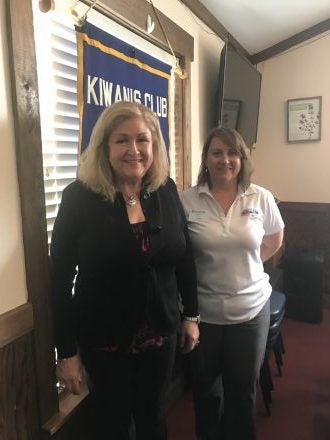Kiwanis Club learns about workplace dynamics, relationships from career coach
Published 3:47 pm Friday, January 25, 2019
Thursday afternoon Kiwanis Club hosted exclusive career coach, Lesa Edwards, where she discussed how to embrace different personalities in the workplace.
One of the ways Edwards helps identify the variation in personalities is through the Myers-Briggs Type Indicator. Members did not take the indication test on Thursday, but were able to be read out the personality traits of the different variations people can be.
Members were first asked if they had ever worked with someone who they didn’t get along with, and what was the problem.
The answers varied from strong personalities to laziness or not wanting to share responsibility. While these are common problems in the workplace, Edwards questioned how could coworkers still get along with each other, even when this happens. She then showed how to maximize the team’s cohesiveness, despite differences by figuring out everyone’s innate preferences.
The first preference is extroversion or introversion. Extroverts get their energy from the outer world; they can talk to almost anyone about anything, Edwards said. Introverts get their energy from the inner world and tend to keep to themselves and have a few close friends.
The second preference depends on how one takes in information. Sensing people take it by way of the five senses. They like tangible things they can put their hands on.
“They are very concrete thinkers,” Edwards said. “But, they may not get the big picture.”
Intuitive is the opposite. They get their information by way of the sixth sense. They have feelings or hunches about things, even though there is no physical proof they should go that direction.
The third preference is how one makes decisions. Thinkers use their heads and look at things from a cool, impersonal reasoning. Thinkers often follow established criteria and treat everyone the same, regardless of circumstances. Feelers value harmony and value love. They take people’s feelings and circumstances into consideration.
Shockingly 75 percent of women in the United State identify as feelers, while only 25 percent of men do.
The last preference was on how one orders their world. Judging people enjoy structure and create calmness by organizing things and start projects early to meet deadlines. Perceiving people alleviate stress by spontaneity and start projects at the last minute fueled by their own adrenaline.
Edwards questioned how could these people be in the same room. She used judgers and perceivers as an example. If judgers are in charge and they know a perceiver will get the work done, but it may be at that last second judgers can create fake deadlines. It can be earlier than others, so they have time to read the perceivers work before print.
There are ways to work with everyone harmoniously if others take the time out to use everyone’s personality to their strong suit.
For people who would be interested in discovering how their office could embrace the varying personalities, contact Edwards at lesa@exclusiveccareercoaching.com.






